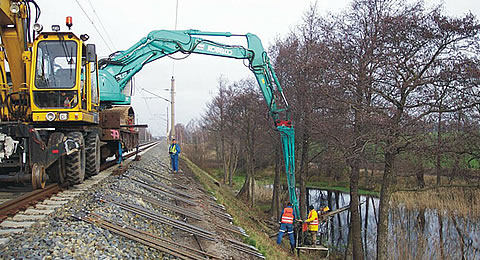An Introduction to typical soil nails

There are many techniques for supporting ground excavations. These excavation support (also known as shoring) techniques may be broadly classified as external and internal (FHWA, 1999). External support techniques rely on resistance provided by elements outside the face of the excavation and include the use of elements such as berms, rakers, anchors, cross-lot bracing and cantilever walls. Internal support techniques rely on the installation of reinforcement into the existing ground and include the use of elements such as soil nails.
Soil nailing technique has been applied to civil engineering project at Mexico City back to 1960s and has gained popularity in Europe since 1970. During the development of soil nailing technique, cementitious grouted drilled nail, post-grouted driven nail, percussion driven nail, jet nail, and etc have been devised and improved.
The basic concept of soil nailing is to reinforce and strengthen the existing ground by installing closely-spaced steel bars, called ‘nails’, into a slope as construction proceeds from ‘top-down’. This process creates a reinforced section that is in itself stable and able to retain the ground behind it. The reinforcements are passive and develop their reinforcing action through nail-ground interactions as the ground deforms during and following construction.
Advantages and disadvantages of soil nailing
Advantages:
1. Allow in-situ strengthening on existing slope surface with minimum excavation and backfilling, particularly very suitable for uphill widening, thus environmental friendly,
2. Allow excellent working space in front of the excavation face,
3. Sub-vertical cut surface reducing loss of space,
4. Avoid unnecessary temporary works,
5. Only requires light machinery and equipment,
6. Flexible at constraint site and excavation shape,
7. Can be used for strengthening of either natural slope, natural or man-made cut slopes,
8. Robust and higher system redundancy,
9. Thinner facing requirement.
Disadvantages:
1. Nail encroachment to retained ground rendering unusable underground space,
2. Generally larger lateral soil strain during removal of lateral support and ground surface cracking may appear,
3. Tendency of high ground loss due to drilling technique, particularly at course grained soil,
4. Less suitable for course grained soil and soft clayey soil, which have short self support time, and soils prone to creeping,
5. Lower mobilized nail strength at lower rows of nailing,
6. Suitable only for excavation above groundwater




